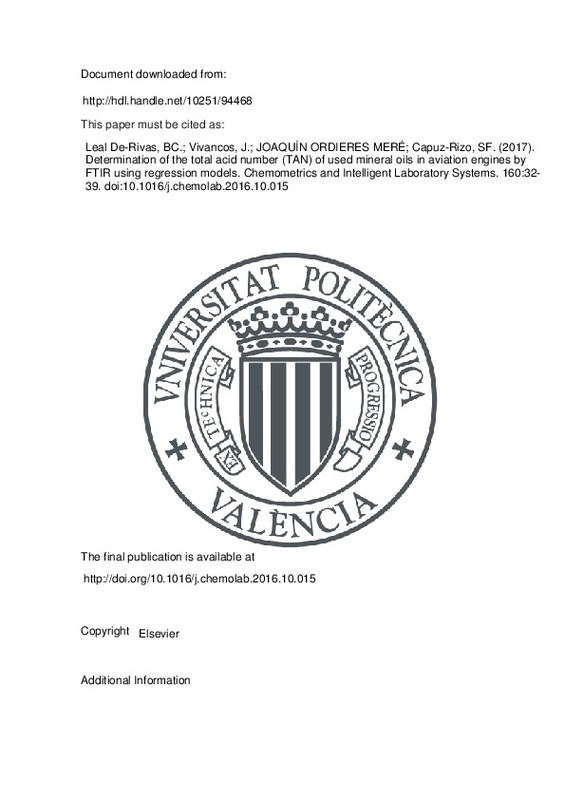JavaScript is disabled for your browser. Some features of this site may not work without it.
Buscar en RiuNet
Listar
Mi cuenta
Estadísticas
Ayuda RiuNet
Admin. UPV
Determination of the total acid number (TAN) of used mineral oils in aviation engines by FTIR using regression models
Mostrar el registro completo del ítem
Leal De-Rivas, BC.; Vivancos, J.; Ordieres Meré, J.; Capuz-Rizo, SF. (2017). Determination of the total acid number (TAN) of used mineral oils in aviation engines by FTIR using regression models. Chemometrics and Intelligent Laboratory Systems. 160:32-39. doi:10.1016/j.chemolab.2016.10.015
Por favor, use este identificador para citar o enlazar este ítem: http://hdl.handle.net/10251/94468
Ficheros en el ítem
Metadatos del ítem
| Título: | Determination of the total acid number (TAN) of used mineral oils in aviation engines by FTIR using regression models | |||
| Autor: | Leal De-Rivas, Beatríz Cecilia Ordieres Meré, Joaquín | |||
| Entidad UPV: |
|
|||
| Fecha difusión: |
|
|||
| Resumen: |
[EN] Total acid number (TAN) has been considered an important indicator of the oil quality of used oils. TAN is determined by potentiometric titration, which is time-consuming and requires solvent. A more convenient approach ...[+]
|
|||
| Palabras clave: |
|
|||
| Derechos de uso: | Reconocimiento - No comercial - Sin obra derivada (by-nc-nd) | |||
| Fuente: |
|
|||
| DOI: |
|
|||
| Editorial: |
|
|||
| Versión del editor: | http://doi.org/10.1016/j.chemolab.2016.10.015 | |||
| Agradecimientos: |
The authors would like to thank Roland Tones of the Universidad Metropolitana for his collaboration in oil sample processing. BLDR acknowledges financial support from the Venoco Company. The authors also thank the Universidad ...[+]
|
|||
| Tipo: |
|







![[Cerrado]](/themes/UPV/images/candado.png)


